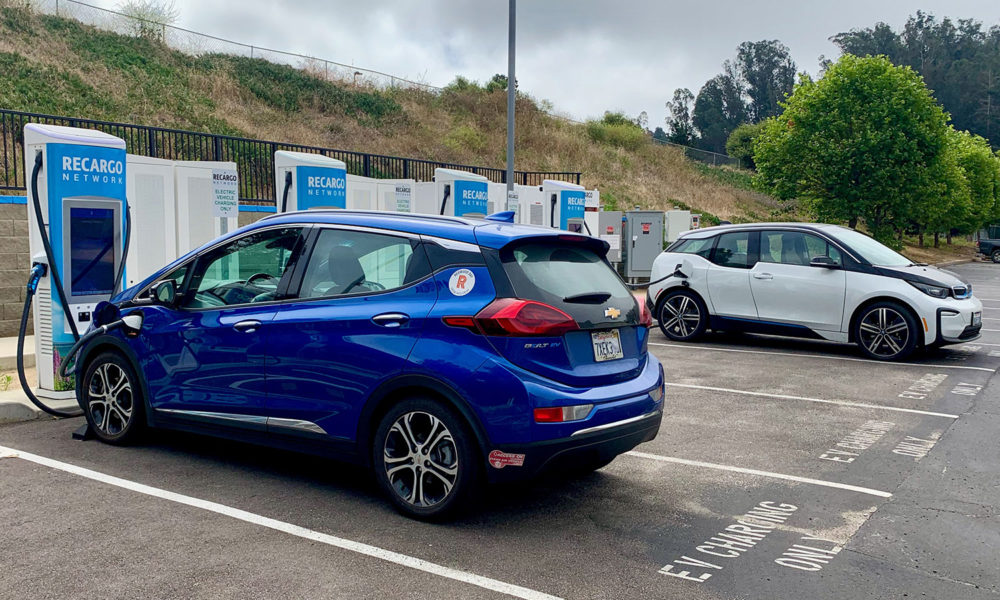On Thursday, California’s air quality regulator, the California Air Resources Board (CARB), released the first draft of their plan to ensure all new passenger cars and trucks are electric drive by 2035. The proposed Advanced Clean Cars 2 program would update existing Zero Emission Vehicle (ZEV) regulations and gradually require all car companies to increase the fraction of electric-drive vehicles they sell in the state. The proposed rules also contain new provisions to protect buyers of used electric vehicles and has rules to reduce the amount of harmful air pollution allowed from gasoline vehicles.
Regulations key to making zero emission models available for car buyers
A key component of CARB’s proposal would ramp up the existing Zero Emission Vehicles requirement on automakers, eventually requiring 100% ZEVs for model year 2035 vehicles. In theory, this means automakers would need to have about 75 percent ZEV sales by 2030. This is about the pace we need to be on to make the large reductions in both climate pollution and air pollution emissions that harm human health.
However, there is the potential for automakers to avoid hitting these sales targets and therefore not achieve needed emissions reductions. For example, EV-only automakers, like Tesla, have the potential to generate significant volumes of excess ZEV credits that they can then sell to another car company that would otherwise miss their ZEV credit requirement. These excess credits, coupled with existing “banked” credits could allow industry laggards to continue to sell large numbers of gasoline vehicles through the end of the decade, causing continued tailpipe emissions from on-road vehicles in 2040 and beyond. History shows that these credit details matter. In the current ZEV regulation that was adopted in 2012, CARB estimated that over 15 percent of new cars would need to be ZEVs by model year 2025. In a 2018 reassessment, CARB projects that factors like credit banking provisions will allow full compliance with the ZEV regulation in 2025 with only 6 to 8 percent ZEV sales, which is lower than current ZEV sales rate. It is critical that new regulations provide more certainty in ZEV sales at much higher levels than the current regulation.
Altogether, the new CARB proposal is a good start, but getting the details right will be critical to ensure that all automakers make the shift from gasoline to electricity and to have certainty that real-world ZEV sales meet CARB’s proposed targets.

Proposed Zero Emission Vehicle sales targets for California’s Advanced Clean Cars 2 regulation. UCS
Automakers need to go beyond press releases and support ZEV standards
One important question left to be answered is how automakers will respond to this proposal. Many automakers (including General Motors and Ford) have stated support for a fully-electric future, while simultaneously funding a trade association that is fighting federal and state emissions regulations. For example, when Governor Gavin Newsom announced a goal of 100 percent electric new car sales by 2035 last fall, the automakers’ group attacked this target as unneeded. Since then, the trade group has also sent letters to a number of governors, stating that ambitions to go 100 percent electric are unlikely to succeed.
At the same time individual automakers have stated goals of moving quickly to electrify their product offerings. For example, GM announced aspirations of going all electric by 2035. Ford has committed to an all-electric future by 2030, albeit only in Europe, and Volvo says they will reach 50 percent all-electric sales as soon as 2025. Commitments like these from automakers show that there is acknowledgement from carmakers that the move from combustion engines to electric drive is inevitable. However, we can’t rely solely on the press releases from car companies. We need to hold automakers responsible for their actions and those of their trade association that would nullify their own stated green aspirations. California needs to set aggressive yet achievable regulations that will ensure the transition away from petroleum happens as soon as possible and automakers that are serious about climate change and corporate responsibility should support these rules.
More details needed about the ZEV program
While we learned a lot about the direction CARB is planning to go with the Advanced Clean Cars 2 and ZEV regulations, there are many details still to be discussed. For example, we’ll need to hear more about how this program will include other states that have adopted California’s rules. Also important will be CARB’s approach to including equity considerations in the new regulations. The agency is planning on releasing more information this summer, and these details will need to be part of these future discussions.

